Photos by Anjuli Persaud
“My name is Dorothy Patoir and I could tell you the story of this village which [got its name because of] … the Caribs who conquered the Arawaks.“ Those were the words of one of the oldest residentsof the Amerindian community of Moraikobai which lies along the Mahaicony River in Region Five.

Patoir told Stabroek News during a recent visit that she has been living in the only Amerindian community in Region Five since she was a baby. The 75-year-old was roasting a piece of fish over a fireside when she related her story.
Moraikobai is an Arawak word meaning tree stump, and there are various stories which are told by the older folks about how the area got its name. The riverside community which is home to some 1300 persons has two satellite villages called Kamarang and Kamwatta.
Before she related her story, Patoir told this newspaper that her last name, “actually belong to my husband …and he is the oldest person here at 87, and I could tell you his forefathers were German so that’s how I have that name.“
|
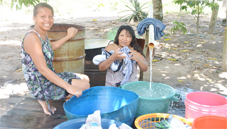
She said that the story which she recalled being told by her parents is that, “the Caribs been after the Arawaks in a little war and the Mora tree fall across the creek and so the Caribs end up conquering them [the Arawaks] and they had a celebration high up in the trees and on the hill.” She said that a nearby creek was called Moraikobai Creek following the incident which “happen years ago before me and you even born.” She said that the community was once called “Moracoba” in the Arawak language, meaning tree (Mora) stump (coba), but several decades ago the name was changed to Moraikobai.
As those in the vicinity paid a keen ear to her story, Patoir related that she was the first baby who was born in the village when it was established decades ago, although she grew up further up the river at a place called Cow Jump, as her family moved between the two locations. However, her family later moved to the village along with others as they found that it was on higher ground.
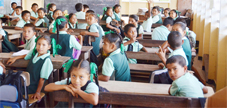
“When I was younger” she said, the area was filled with thick forest and according to her, over the past few decades, persons cleared the area and as time passed it developed into a thriving timber harvesting community.
According to Village Councillor Brigitte Daniels, Moraikobai is one of the most peaceful communities in the country, and while she has travelled and lived in various parts of Guyana, it remains her home. She said that the village is usually quiet, “except for weekends or when we have a wedding or some function you would see people gathering or celebrating whatever it is.”
According to Hermina Adrian, life for some residents of the community can be challenging, and as a mother of three with a sickly husband, “I can tell you it hard for me.” She said that several years ago, her husband was involved in an accident and he was later confined to bed. He has since recovered from the accident, she said, but he has been unable to work since.
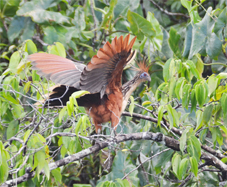
Adrian told Stabroek News she had been working hard making cassava bread and casareep which she sells to visitors and residents in order to make ends meet. She said that her efforts have been bearing fruit, since her daughters were able to gain places at “good“ secondary schools on the coast. Another child is currently preparing to write the National Grade Six examinations and Adrian says that she will ensure that he too can follow in the footsteps of his two sisters.
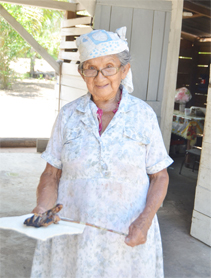
She said that on a weekly basis, she sits, “on this matapee and make the cassava melee and then the casareep from the cassava water.” She sells cassava bread at $300 per cake while her casareep is retailed at $2500 per bottle.
Adrian is also a member of the Moraikobai Handicraft Association (MHA) which has been in existence for more than a decade. At the moment the project has hit a snag as the mainly female oriented group has been experiencing problems marketing their products, while the weather has also affected their ability to source quality material to make the handicraft items.
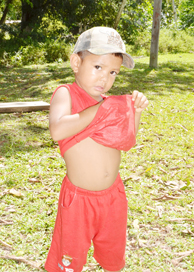
The community has several shops, its own functioning well which provides potable water to the entire village, while households receive electricity for 4 hours each night. There are three Christian churches including an Anglican church which was established when the community was conceived as a mission. In the early days it was known as St Francis Mission, and later, St Francis District. There is as well as a hospital, nursery and primary school there and residents called on the Education Ministry to establish a secondary learning institution too since for many children schooling would end at the Grade Six Level. Residents explained that many students would have to relocate to Mahaica on the coast to attend secondary school, and this has proven to be difficult for both the parents and the children.
Moraikobai residents told this newspaper that the community is in need of a mobile phone network, and as such they appealed to the two main telecommunications providers to set up a mobile phone system within the community. Daniels related that a few years ago, GT&T had set up a wireless community phone system there, and residents have been relying on the pivotal service ever since.
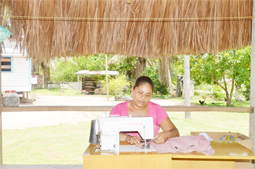
During the visit, residents could be seen lined up outside the small phone booth as they waited their turn to call their loved ones on the coastland. It was noted that one of the two phone companies visited the area in recent times with the intention of setting up a mobile phone network, but the plan fizzled.
Residents of Moraikobai are mainly engaged in farming as well as chainsaw logging. According to Daniels, most young men after leaving school would become involved in the logging sector, while others would leave for the coast in search of employment.
At the moment the village council is constructing a resource centre which will house a library, kitchen and other facilities to host activities which would further develop the village.

Recently, the decomposed body of a villager was found near to a burial ground aback of the community, and residents said that it was the most shocking discovery, as the village was considered crime free.” You can leave the doors to your house open at all times and nobody will trouble your property,” a teacher noted.
Moraikobai is situated approximately 90 miles up the Mahaicony River and is accessible by boat and road, the latter of which can be treacherous given that it is of sand; it connects the village to Linden in Region 10.
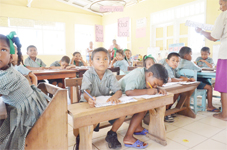
The community is ideally positioned to supplement the country’s tourism sector and according to residents, once the area is marketed in that regard, they are ready to transform it into a sought-after place of interest.




